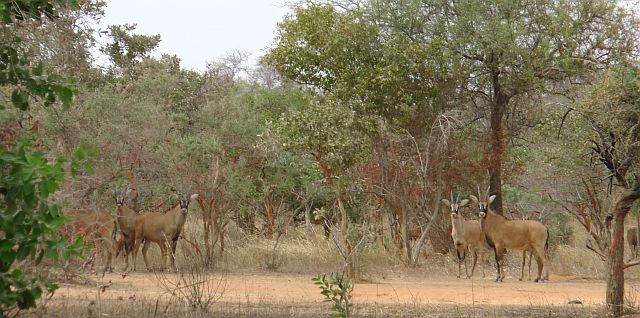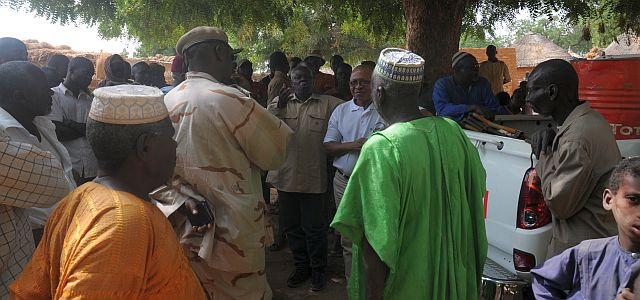There is a problem of meshing that is to get good water points at equal distances across the reserve. Since 1972, the country has decided to have a national reserve for wildlife and ban hunting. The W park forming and system with the Arly and the Pendjari in Burkina and Benin is transboundary cross by the Mekrou river. According to Hamissou Halilou Malam Garba, head of the division of protected areas “the more you have water in the reserve, you will have more animals attracting more visitors generating more revenues for the riparian municipalities and creating more jobs for the local communities”. 
According the “Prefect” (representative of central administration) of the department of Say, the administrative region of the reserve, Mr. Mamane Awali Bouro, the national development agenda of the country is encouraging the building of water points for wildlife in order to provide revenues to populations through sight-seeing. And the Secretary General of the Prefecture, Mrs. Aissatou Harouna, explains that the local authorities are totally in support of the pilot project and ready to accompany its implementation.
The water point that is being built in the reserve was designed for a capacity of 10,000 cubic meters but has been upgraded to 16,000 m3 to keep water for a longer period after the rainy season ending generally in September of early October. This water point is estimated to serve for the biodiversity of a catchment basin of 20 km2 . The construction of the water point is providing job to twenty young and adult persons of three riparian villages for a period of about four months. When the reservoir is built and supplied with rain waters it is expected to contribute to the increase of the wildlife population which has a lot of positive impacts on people’s daily lives.

M. Dioffo Oumarou, mayor of the Tamou municipality where the reserve is located says that the pilot project by contributing to make water available during a longer period for wildlife is contributing to poverty reduction. He explains that 50% of the revenues drawn from the reserve are given to the municipality. When people visit the park more people serving as guides and eco watchers have jobs as well as travel agencies, Oumarou said. Unfortunately, since the event in the Sahel where security issues are raised the tourism has been negatively impacted causing a drastic decline from more than 7,000 visitors to less than one thousand a year according to the conservator of the W regional reserve.

The CWP Niger has given up the total responsibility of the implementation of the pilot project ensured by government structures. Hamissou Garba says that “the state is totally owning the implementation of the project which is really different from other projects we have implemented in the reserve”. He explains that the CWP has played a role of facilitation and left the implementation to the government institutions. The CWP comes as an external eye to control and supervise what is being done. The permanent secretary of the CWP, M. Radji Garba says he is satisfied with the project implementation and has supported the request made by the division of protected areas to extend more funding to extend the capacity or even build a new reservoir.

